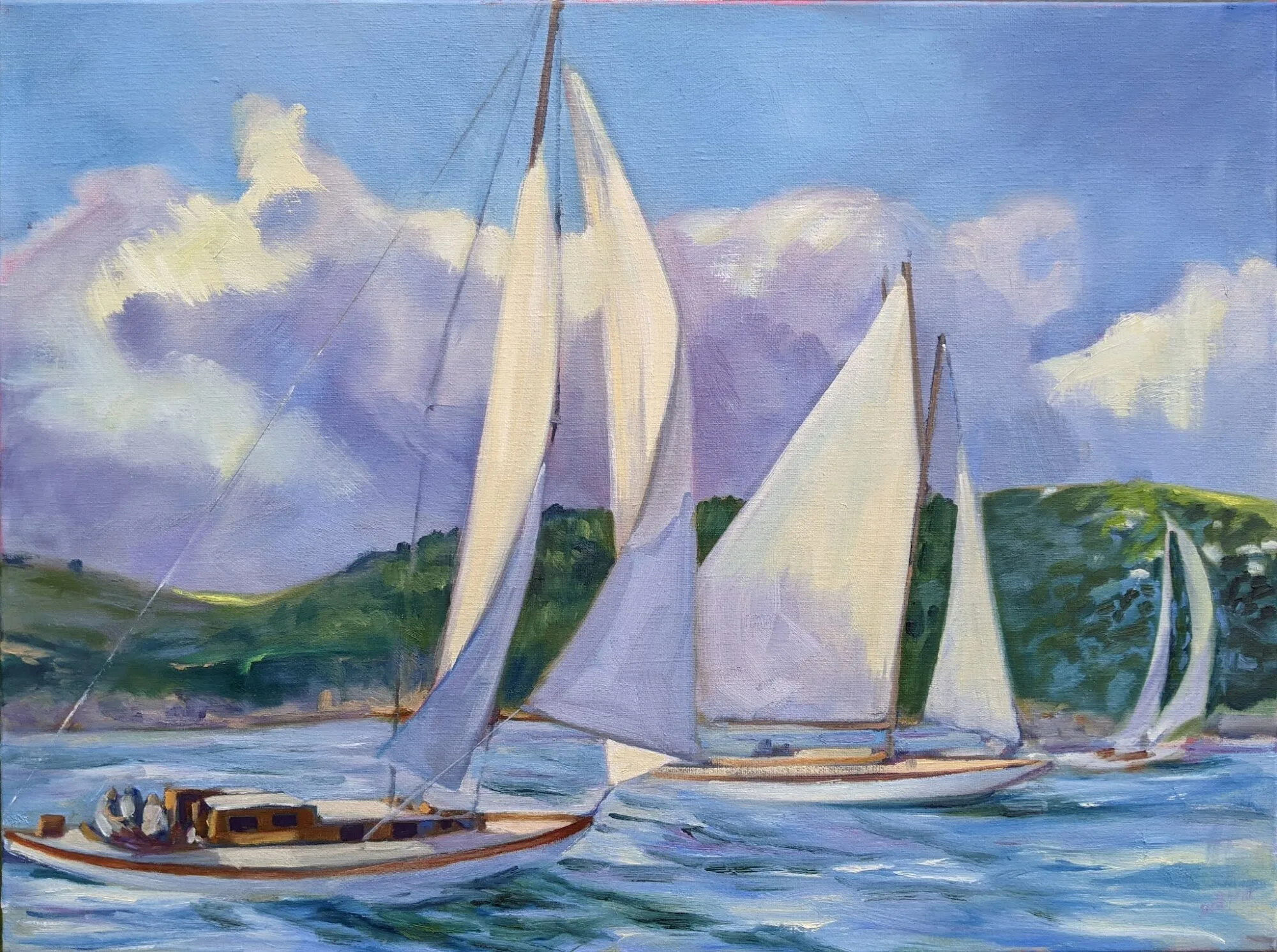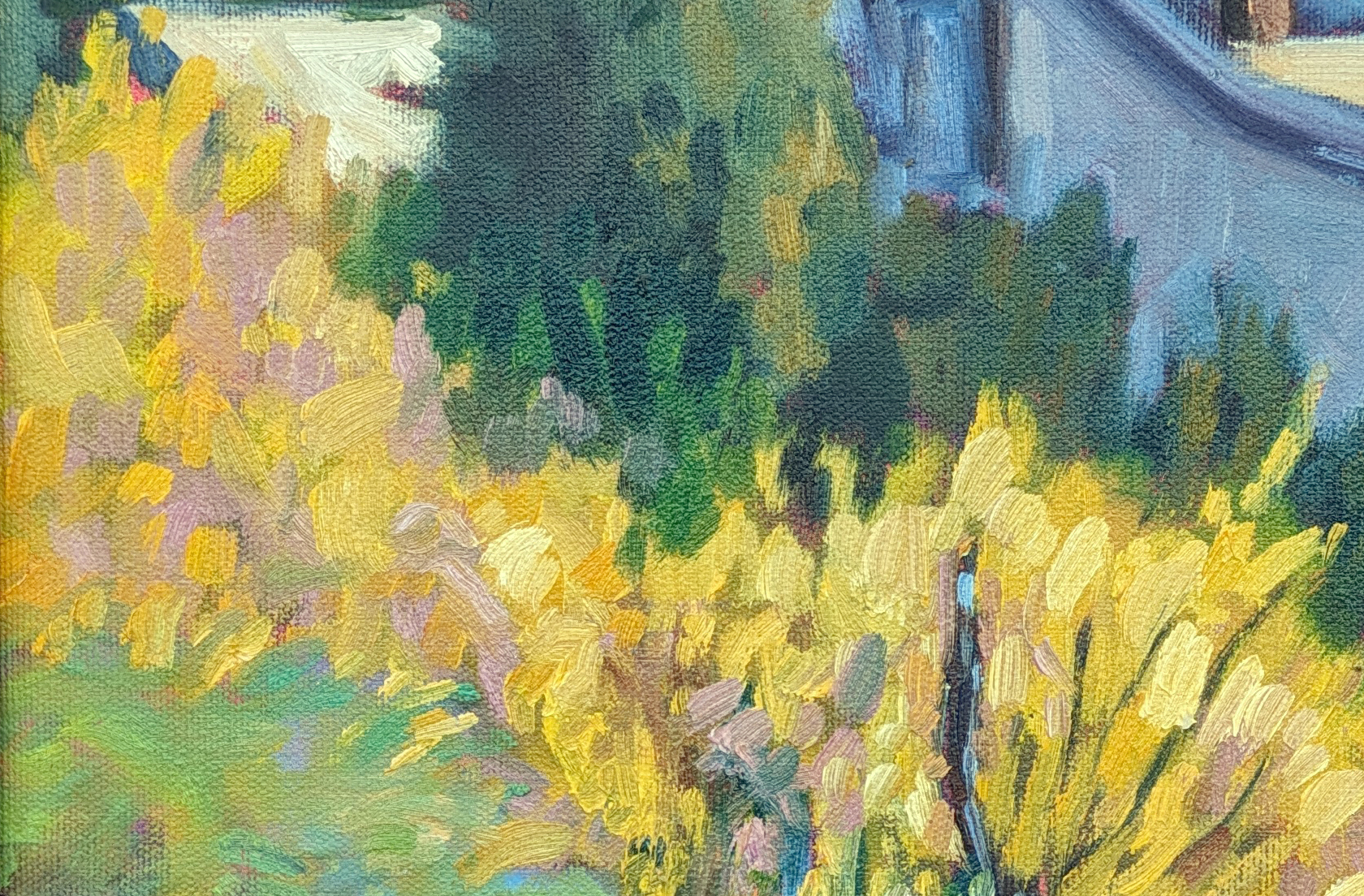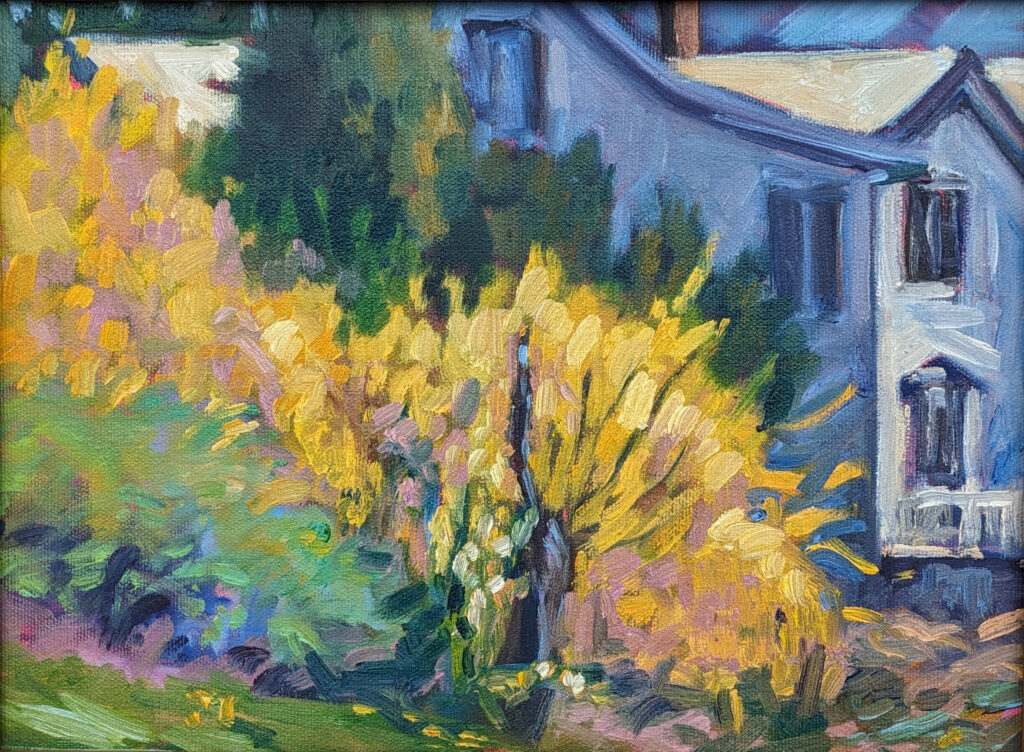
I was chuffed to get home from Malta to find hyacinths blooming along my driveway. The pieris japonica along my patio is singing its heart out, and the forsythia is starting to color up. Long delayed, the first signs of spring are finally here in midcoast Maine.
“What will you be teaching in the first class of Advance your Painting Skills?” a student asked. “I want to know what we’re painting!”
As I’ve mentioned, this is a bespoke class, based on students’ needs, but there are certain things every painting class should stress. Color is critical, and what better place to start than early spring flowers?
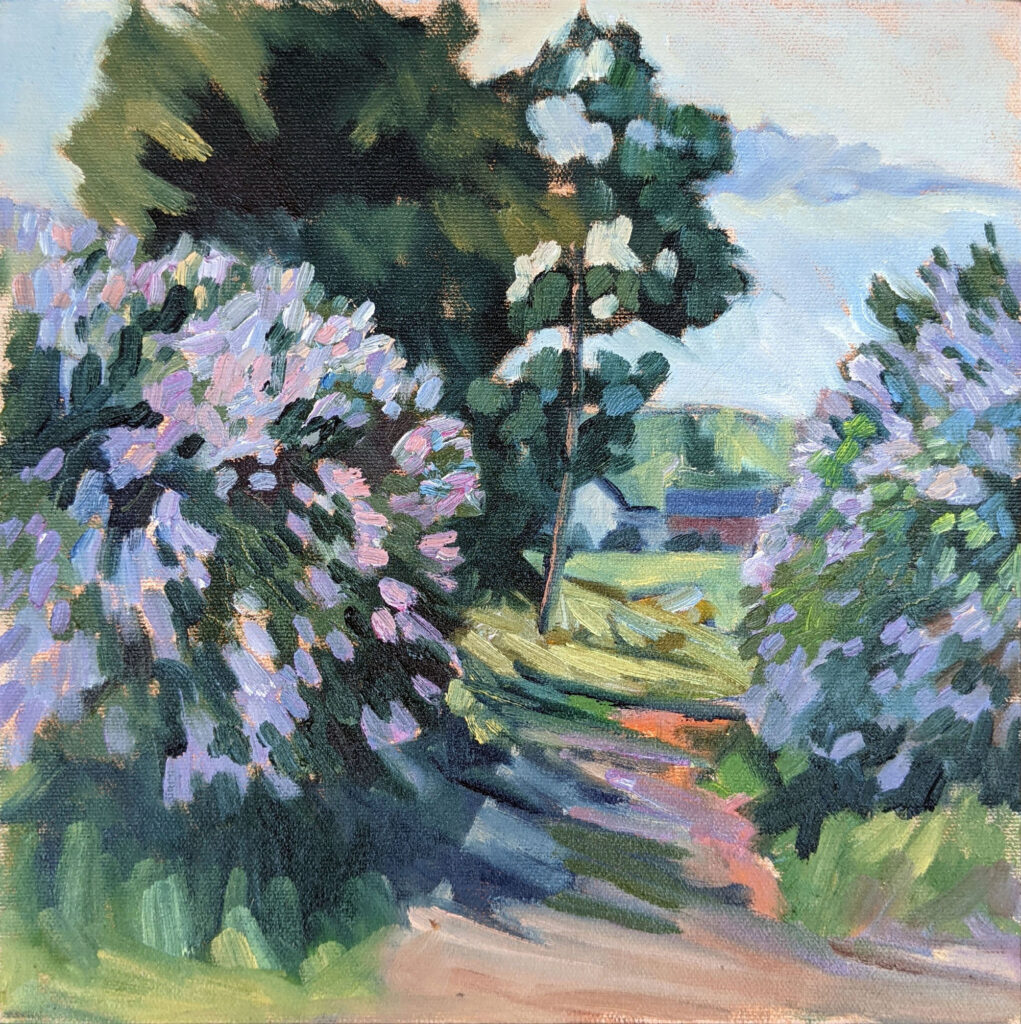
Learning how to paint, for the midlevel painter
We have six three-hour classes, which isn’t a lot of time to get things done. But here are the fundamental concepts that I will be stressing in this class:
Project workflow
That’s a fancy way of saying the artist has a process in place from idea to finish. That includes preparatory sketches and an order of operations appropriate for your specific media. For watercolors, that usually means light to dark. For oils and other solid media, that means dark to light and fat over lean. For everyone, it means big shapes to small shapes.
While there are exceptions to these rules, they should be locked down before you start puttering.
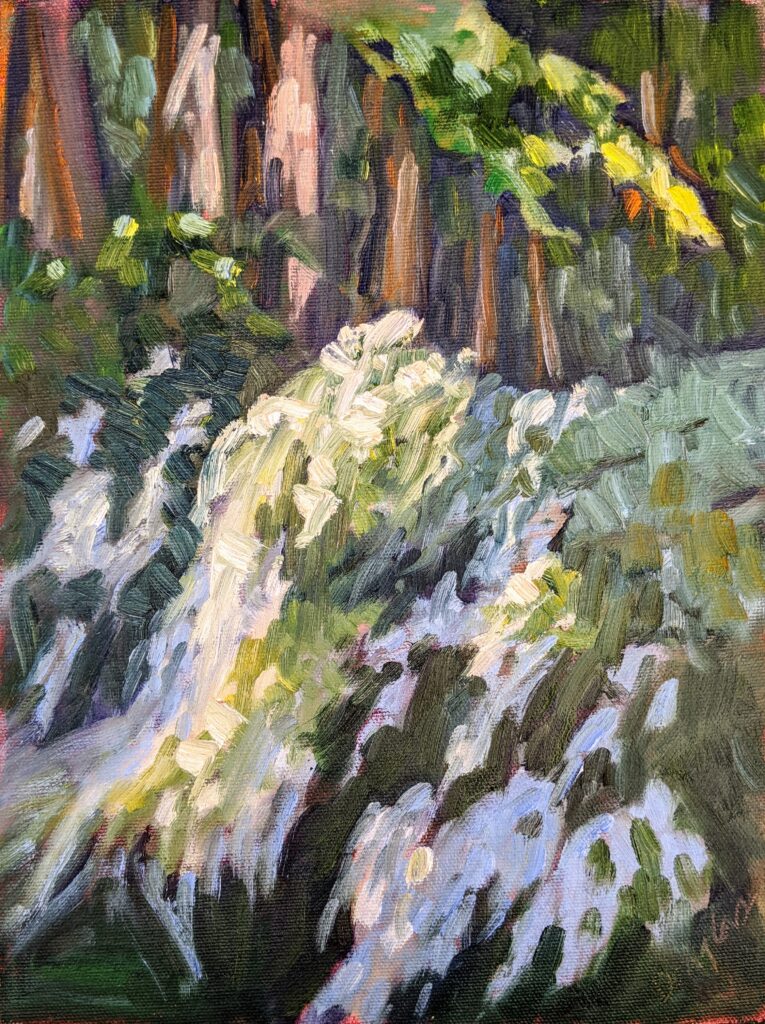
Color theory
That’s where we’ll be starting Monday night. Color theory is more than just the color wheel (important as that is). It includes warm vs. cool colors and color harmonies.
Mixing paint
Using the right color from the start is the secret to not flailing around. It’s a question of method.
Composition and design
If there’s one thing I natter on about, it’s composition. That includes balance, rhythm, movement, value, and focal points.
Brushwork
Brushwork, like handwriting, is highly individual; we don’t need the equivalent of the Palmer method. However, grip, angle and bristle type have a big effect on the results.
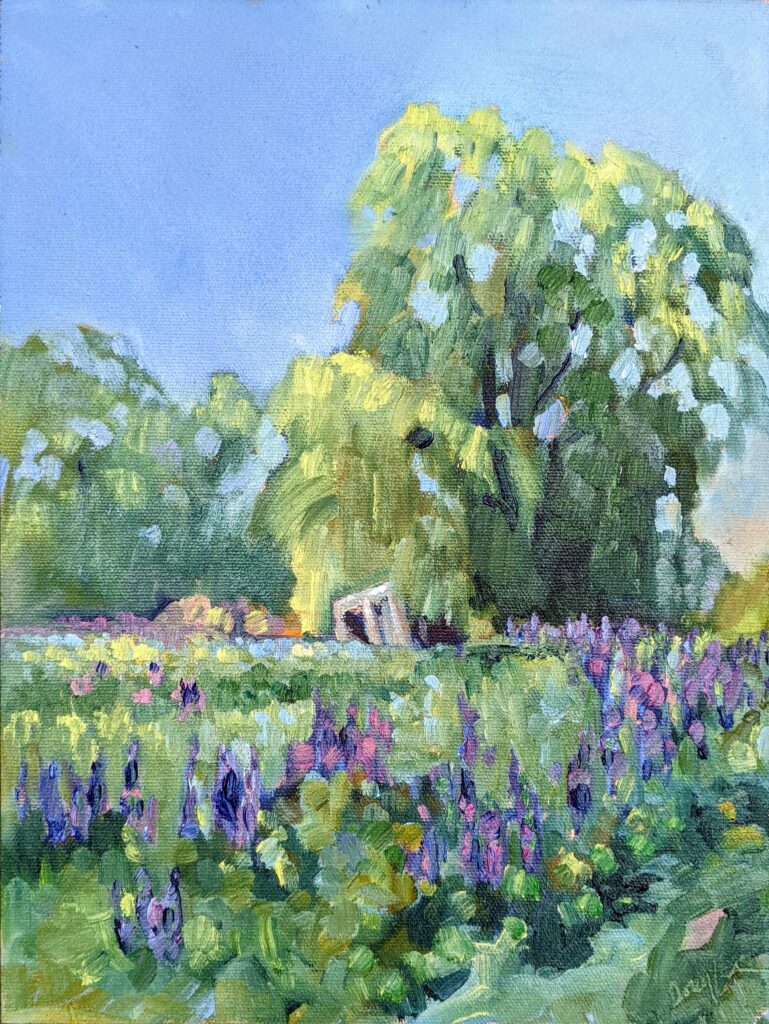
Working from life
Working from life is the best way to become adept at painting. While we can’t always avoid reference, we’ll learn how to simplify and strengthen our designs based on the real world. And we’ll explore the difference between working from life and working from photos.
The ability to critique our own work
I like to think of this as developing executive function in painting—to see how things are going wrong before they’re a disaster and to fix the problems in midstream.
An art vocabulary
Learning how to paint should include developing an art vocabulary and a familiarity with the canons of art. Seeing how master artists executed important concepts helps us understand how to apply those same ideas in our work. In every class, I try to show students great works of art that illustrate key concepts in every class.
My Tuesday class is sold out, but there’s still room in the Monday evening class:
Zoom Class: Advance your painting skills
Mondays, 6 PM – 9 PM EST
April 28 to June 9
Advance your skills in oils, watercolor, gouache, acrylics and pastels with guided exercises in design, composition and execution.
This Zoom class not only has tailored instruction, it provides a supportive community where students share work and get positive feedback in an encouraging and collaborative space.
Reserve your spot now for a workshop in 2025:
- Advanced Plein Air Painting, Rockport, ME, July 7-11, 2025.
- Sea and Sky at Acadia National Park, August 3-8, 2025.
- Find Your Authentic Voice in Plein Air, Berkshires, MA, August 11-15, 2025.
- Immersive In-Person Fall Workshop, Rockport, ME, October 6-10, 2025.
